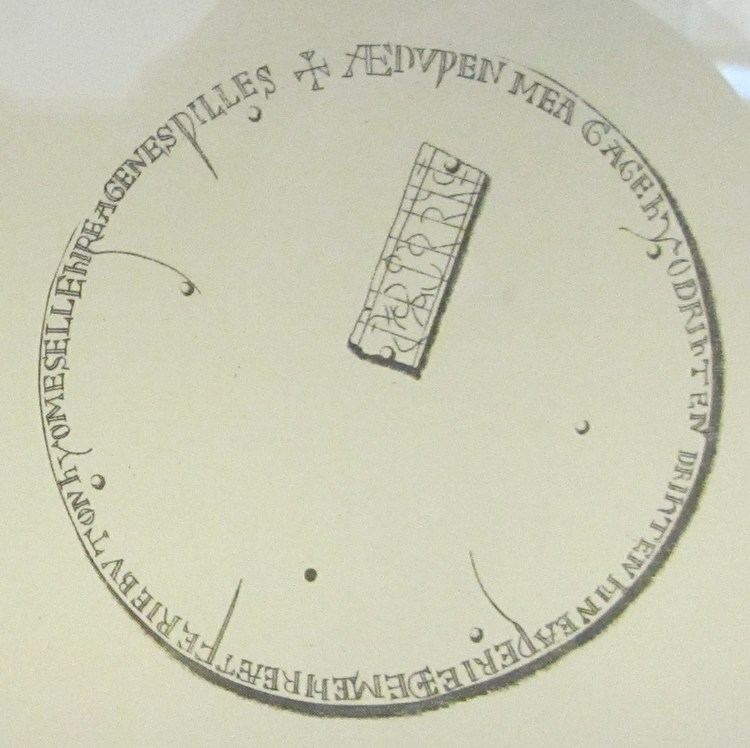 | ||
Pseudo-runes are letters that look like Germanic runes but are not true runes. The term is mostly used of incised characters that are intended to imitate runes. Pseudo-runes in this sense are difficult to distinguish from cipher runes, which are characters used as a replacement of standard runes but which do have an intended reading, while pseudo-runes have no linguistic content.
Contents
- Imitation runes
- Manuscript only runes
- Latin script written in runic like letters
- Other rune like scripts
- References
The term "pseudo-runes" has also been used for runes "invented" after the end of the period of runic epigraphy, used only in medieval manuscripts but not in inscriptions. It has also been used for unrelated historical scripts with an appearance similar to runes, and of modern Latin alphabet variants intended to be reminiscent of runic script.
Imitation runes
The main use of the term pseudo-rune is in reference to epigraphic inscriptions using letters that imitate the appearance of runes, but which cannot be read as runes. These are different from cryptic or magical runic inscriptions comprising a seemingly random jumble of runic letters, which cannot be interpreted by modern scholars, but can at least be read. In contrast, pseudo-runic inscriptions consist mostly of false letters (some pseudo-runes within a pseudo-runic inscription may coincidentally appear similar or identical to true runes), and so cannot be read at all, even nonsensically.
It has been suggested that pseudo-runic inscriptions were not made by specialist 'rune masters' as is thought to have been the case when carving traditional runic inscriptions, but were made by artisans who were largely ignorant of runes. According to Nowell Myres, pseudo-runes may have been "intended to impress the illiterate as having some arcane significance".
Manuscript-only runes
The term pseudo-rune has also been used by R. I. Page to refer to runic letters that only occur in manuscripts and are not attested in any extant runic inscription, for example the Anglo-Saxon runes ᛢ cweorth (q), and ᛥ stan (st). The age of these "manuscript-only" runes overlaps with the period of runic inscriptions, e.g. the three Anglo-Saxon runes ᛢ cweorth and ᛥ stan are both found in the 9th-century Codex Vindobonensis 795; the rune ᛡ ior (io) is also an Anglo-Saxon innovation found in 9th-century manuscript tradition, but unlike cweorth and stan it is also found epigraphically, in the Seax of Beagnoth. This makes clear that the status of a rune as "manuscript only" may be due to the accident of transmission rather than a historical category.
Of a different type are the "pseudo-runes" invented in the modern period, such as the unistorical runes in the Armanen Futharkh created by Guido von List in 1902 and later authors of Germanic mysticism (e.g. Gibor, Hagal, Wendehorn).
Latin script written in runic-like letters
In modern usage, Latin text written with deliberately rune-like, angular letters has been described as pseudo-runic. For example, members of the Norwegian Legion who served on the Eastern Front during World War II had a badge with the word 'Frontkjemper' (front fighter) written in rune-like letters.
Other rune-like scripts
The historical Old Turkic and Old Hungarian scripts, unrelated with the runes but similar in application (inscriptions etched in stone), have sometimes been referred to as pseudo-runes or pseudo-runic, or alternatively as "runiform".
